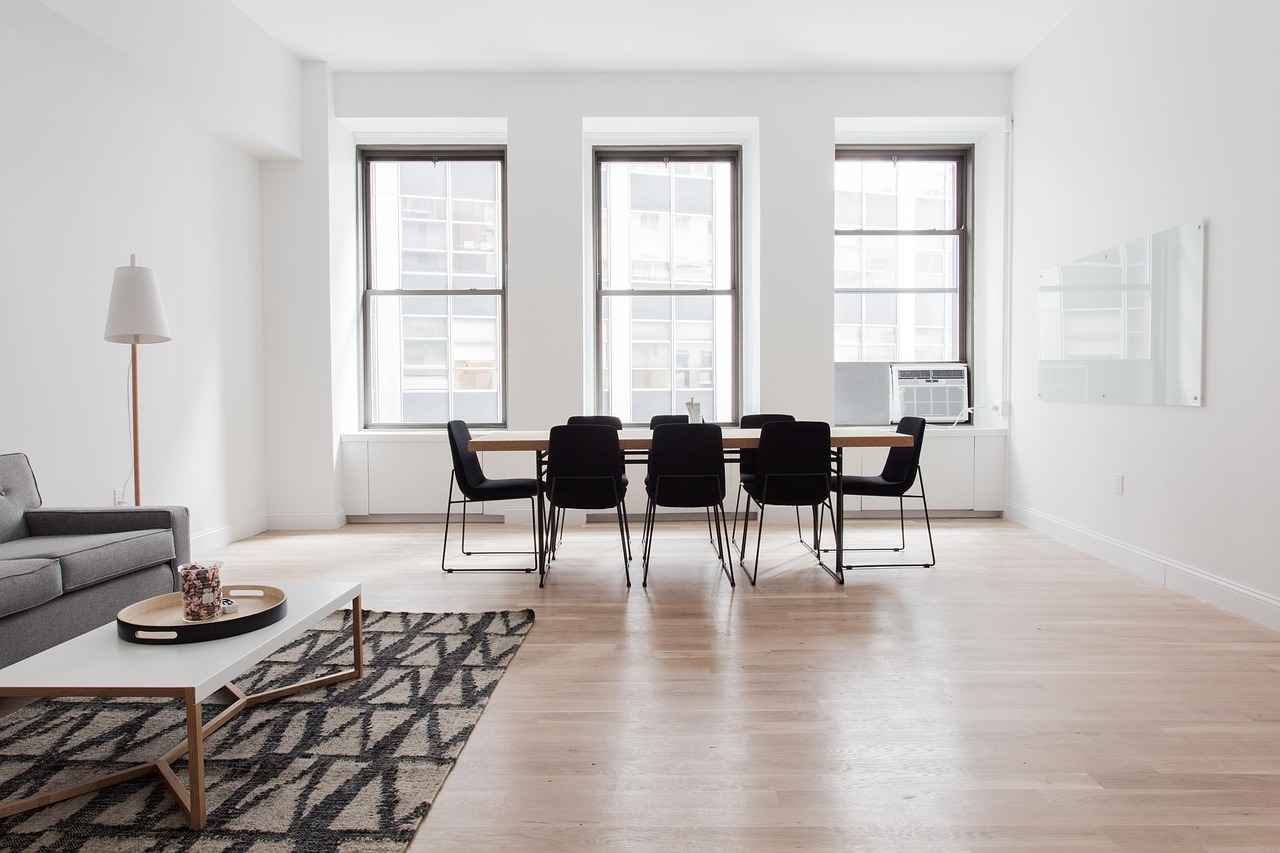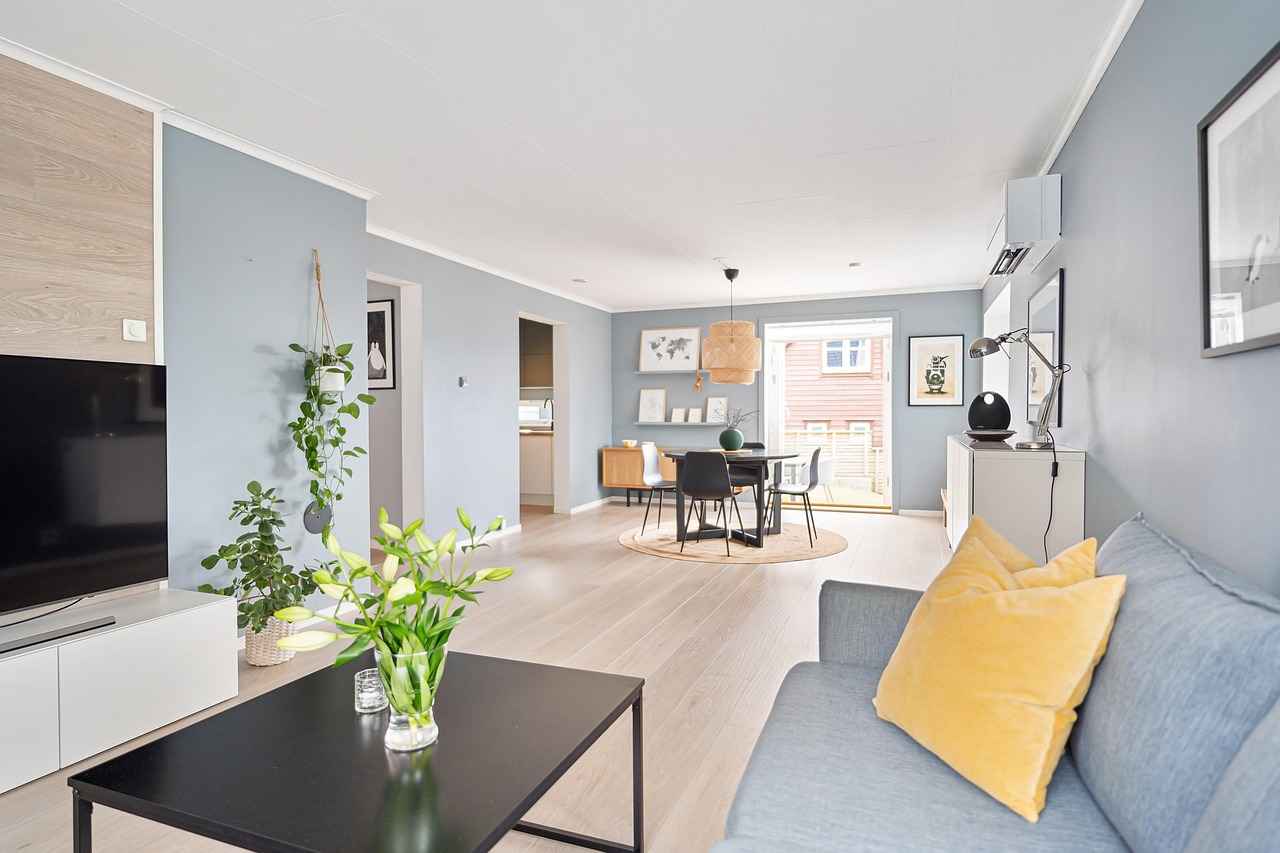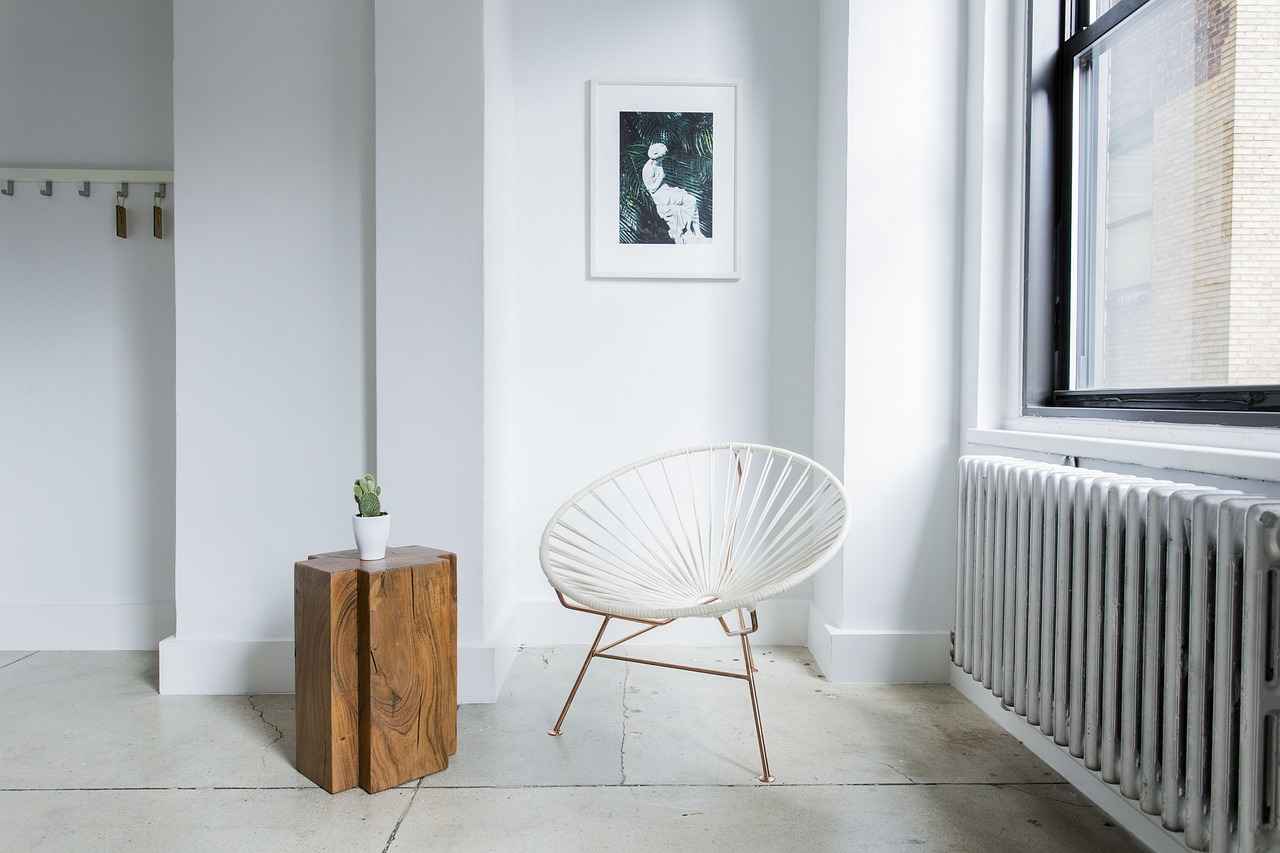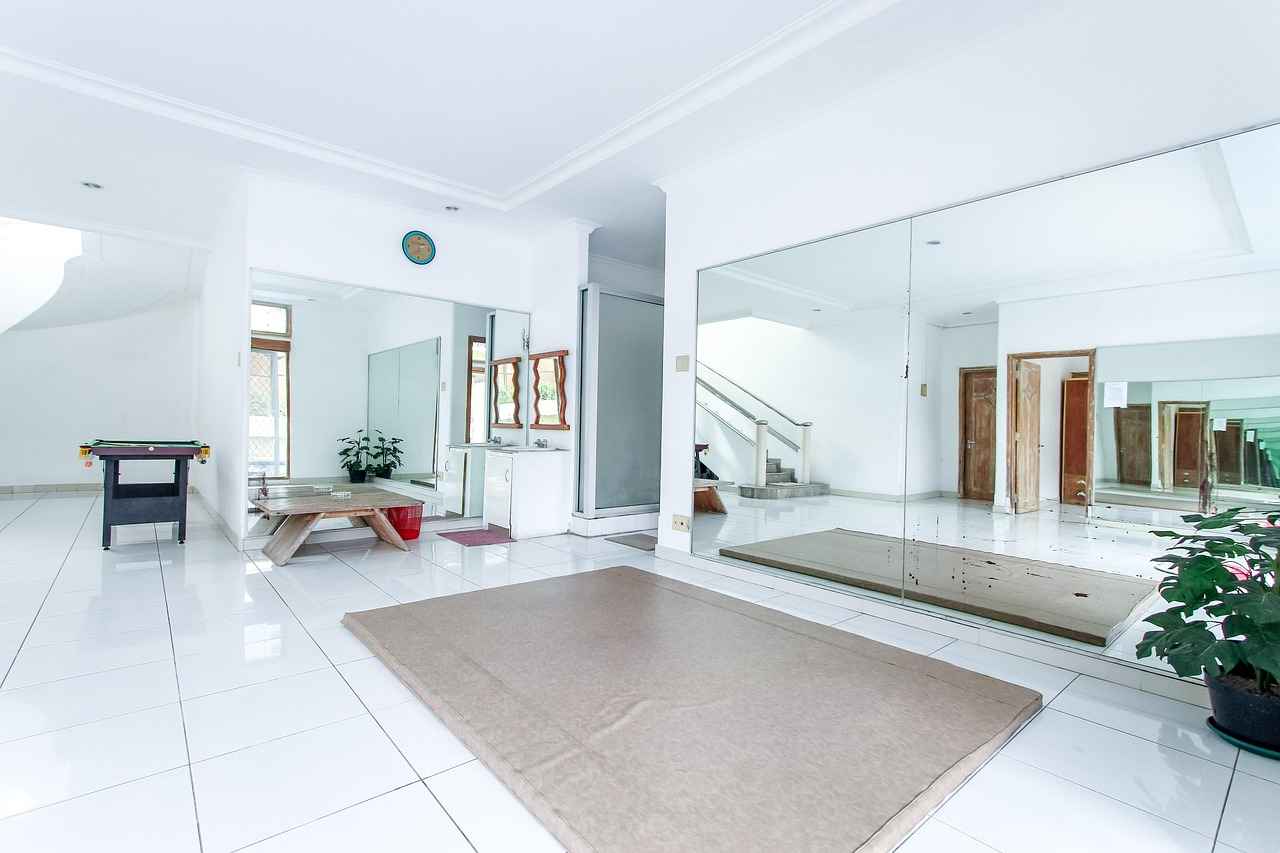When it comes to creating a peaceful environment in your bedroom or home office, soundproofing room dividers are an essential solution. These innovative products not only enhance privacy but also significantly reduce noise levels, allowing you to focus on your tasks or enjoy some quiet time. In this guide, we will explore the various types of soundproofing room dividers, their benefits, and practical insights to help you make an informed decision.
Soundproofing room dividers are specially designed partitions that minimize noise transmission between different areas. They are particularly useful in settings where multiple activities occur simultaneously, such as in shared living spaces or busy home offices. By creating designated quiet zones, these dividers promote a more tranquil atmosphere.
Investing in soundproofing room dividers can greatly enhance your overall comfort and productivity. Not only do they block unwanted noise, but they also help create a sense of privacy and serenity. This can be especially beneficial for individuals working from home or those who need a peaceful environment for relaxation.
There are several types of soundproofing room dividers available, each offering unique features tailored to different needs:
- Portable Room Dividers: These lightweight options are easy to move and rearrange, making them perfect for temporary setups or flexible spaces.
- Acoustic Panels: Specifically designed to absorb sound waves, these panels can be mounted on dividers or walls to enhance soundproofing capabilities.
- Folding Room Dividers: Offering versatility and easy storage, folding dividers can be expanded or collapsed based on your space requirements.
The effectiveness of soundproofing room dividers largely depends on their materials and design. Understanding their sound absorption capabilities can help you choose the right product for your needs.
Common materials used in soundproofing dividers include fabric, wood, and foam. Each material has its own sound absorption properties, which can influence the overall effectiveness of the divider. For example, foam is excellent for absorbing sound waves, while heavy fabrics can block noise transmission effectively.
Decibel reduction ratings are crucial for assessing how well a room divider can block sound. Familiarizing yourself with these ratings can guide you in selecting a product that meets your soundproofing needs.
Beyond noise reduction, soundproofing room dividers offer several additional benefits:
- Improved Privacy: These dividers create personal spaces within larger areas, ensuring privacy during work or relaxation.
- Enhanced Aesthetics: Many soundproofing dividers are available in various designs and colors, allowing you to improve your interior decor while achieving sound reduction.
When selecting a soundproofing room divider, consider factors such as size, material, and design to ensure it meets your specific needs effectively.
Before making a purchase, evaluate your space to determine the appropriate size and style of the divider. This assessment can help you maximize both functionality and aesthetics.
Your budget will play a significant role in your choice of soundproofing dividers. Understanding the price range and available options can help you find a solution that fits your financial plan while still meeting your soundproofing needs.
In conclusion, soundproofing room dividers are a valuable investment for anyone looking to enhance their living or working environment. By understanding the various types, materials, and benefits, you can make an informed decision that significantly improves your comfort and productivity.

What Are Soundproofing Room Dividers?
Soundproofing room dividers are innovative solutions designed to minimize noise transfer between different areas of a space. These partitions are particularly beneficial in environments where peace and quiet are essential, such as bedrooms and home offices. By effectively blocking sound, they create a more tranquil atmosphere, allowing individuals to focus on their tasks without distractions.
These dividers are typically made from a variety of materials, including acoustic fabrics, foam, and wood, each contributing to their overall soundproofing capabilities. Unlike standard room dividers, soundproofing options are engineered specifically to absorb sound waves, thereby enhancing the acoustic quality of a room.
One of the key advantages of soundproofing room dividers is their versatility. They can be used in various settings, from residential spaces to commercial offices. For instance, in a home office, a soundproof divider can help create a dedicated workspace that minimizes outside noise, leading to improved productivity. Similarly, in a bedroom, these dividers can help block out sounds from other areas of the house, ensuring a restful environment.
Moreover, soundproofing room dividers come in different styles and configurations, including portable and folding designs. Portable dividers are lightweight and can be easily moved, making them ideal for temporary setups or multi-purpose rooms. On the other hand, folding dividers offer the flexibility to adjust the space as needed, allowing for easy storage when not in use.
When selecting a soundproofing room divider, it is essential to consider factors such as the material used, the design, and the intended use. For instance, if you require a divider for a home office, you may want a model that not only provides excellent sound absorption but also complements your existing decor. Additionally, understanding the decibel reduction ratings of different products can help you make an informed choice regarding their effectiveness in blocking sound.
In summary, soundproofing room dividers are a valuable investment for anyone looking to enhance their living or working environment. They not only provide noise reduction but also contribute to a more organized and aesthetically pleasing space. By carefully evaluating your needs and the available options, you can find the perfect soundproofing solution to suit your requirements.

Why Invest in Soundproofing Room Dividers?
When it comes to creating a comfortable and productive environment, investing in soundproofing room dividers can be a game changer. These innovative solutions are designed to minimize noise disruption while enhancing privacy, making them an ideal choice for both bedrooms and home offices.
In today’s fast-paced world, distractions are everywhere. Whether you’re working from home or trying to find a peaceful space to unwind, noise can be a significant barrier to achieving your goals. This is where soundproofing room dividers come into play. They serve as effective barriers that not only block unwanted noise but also contribute to a more tranquil atmosphere.
One of the primary reasons to invest in these dividers is their ability to enhance comfort. By reducing noise levels, they allow you to focus better on tasks, whether it’s completing work assignments or enjoying a quiet evening at home. Imagine being able to concentrate on that important project without the constant interruptions of household sounds or external traffic. This level of focus can lead to increased productivity and a greater sense of satisfaction in your daily activities.
Moreover, soundproofing room dividers create a private sanctuary within your living spaces. In shared homes or open-concept offices, having a designated area that feels personal and secluded is invaluable. It allows individuals to engage in activities such as reading, meditating, or even working without feeling exposed to the hustle and bustle around them. This privacy can significantly improve mental well-being, as it provides a much-needed escape from the chaos of daily life.
Additionally, these dividers offer aesthetic benefits. Available in a variety of designs and colors, they can complement your existing decor while serving a functional purpose. You can choose from sleek, modern styles or more traditional designs, ensuring that your space remains visually appealing. This dual functionality of enhancing both soundproofing and aesthetics makes them a worthwhile investment.
Furthermore, soundproofing room dividers are versatile. They can be easily moved or adjusted to fit different spaces and needs. Whether you need to set up a temporary workspace or create a cozy reading nook, these dividers can adapt to your requirements. Their portability is particularly beneficial for those who frequently rearrange their living or working environments.
In terms of effectiveness, the materials used in soundproofing dividers play a crucial role. Many dividers incorporate dense fabrics, foam, or specially designed acoustic panels that absorb sound waves, further enhancing their noise-blocking capabilities. Understanding the decibel reduction ratings of these products can help you choose the right option for your specific needs.
In conclusion, investing in soundproofing room dividers is not just about reducing noise; it is about creating a space that fosters comfort, privacy, and productivity. With their numerous benefits, from improved focus to enhanced aesthetics, these dividers are an invaluable addition to any home or office environment. By carefully selecting the right type of divider, you can transform your space into a serene oasis that supports your lifestyle.

Types of Soundproofing Room Dividers
When it comes to creating a peaceful environment, soundproofing room dividers play a crucial role. They are not just functional but also add an aesthetic appeal to your space. Understanding the various types of soundproofing room dividers available can help you make an informed decision that suits your needs.
There are several types of soundproofing room dividers, each designed with unique features to cater to different environments. Here’s a closer look at the most popular options:
- Portable Room Dividers: These dividers are lightweight and easy to move, making them ideal for temporary setups. They are perfect for those who frequently rearrange their spaces or need to create a quiet area on the fly.
- Acoustic Panels: Specifically designed to absorb sound waves, acoustic panels can be mounted on dividers or walls. They enhance the overall soundproofing capabilities of your room and are particularly effective in home offices or studios.
- Folding Room Dividers: Offering versatility, folding dividers can be expanded or collapsed based on your requirements. They are easy to store when not in use and can adapt to various room sizes, making them a flexible option.
- Soundproof Curtains: These heavy curtains are made from dense materials that block sound. They can be hung to create a temporary barrier and are particularly useful for larger spaces where traditional dividers may not be feasible.
- Glass Room Dividers: While not traditionally soundproof, specially designed glass dividers can offer some level of sound reduction. They provide a modern aesthetic and allow for light transmission while still creating separate spaces.
When choosing a soundproofing room divider, it’s essential to consider factors like effectiveness, mobility, and design. Each type has its strengths and weaknesses:
| Type | Effectiveness | Mobility | Design Flexibility |
|---|---|---|---|
| Portable Room Dividers | Moderate | High | Varied |
| Acoustic Panels | High | Low | Limited |
| Folding Room Dividers | Moderate | High | Varied |
| Soundproof Curtains | Moderate | High | Varied |
| Glass Room Dividers | Low to Moderate | Low | High |
Before making a purchase, assess your specific needs. Consider the following:
- Space Requirements: Measure your area to determine the appropriate size and style for the divider.
- Material Preferences: Different materials offer varying levels of sound absorption. Choose one that aligns with your aesthetic and functional requirements.
- Budget: Soundproofing dividers come in various price ranges. Set a budget that allows you to explore quality options without overspending.
By understanding the different types of soundproofing room dividers and their unique features, you can make an informed decision that enhances your space’s comfort and functionality.
Portable Room Dividers
have become increasingly popular in modern living and working environments due to their versatility and practicality. These lightweight partitions are designed for easy mobility, making them an ideal solution for temporary setups where flexibility is essential. Whether you are looking to create a private workspace in a shared office or to separate areas in your home, portable room dividers can adapt to your needs.
One of the primary advantages of portable room dividers is their lightweight design. Unlike traditional walls or permanent partitions, these dividers can be effortlessly moved from one location to another. This feature is particularly beneficial for individuals who frequently rearrange their spaces or need to create different environments for various activities. For instance, a home office can be transformed into a guest room with the simple addition of a portable divider.
Portable room dividers provide unparalleled flexibility in space arrangement. They can be easily repositioned to accommodate changing needs, allowing users to create intimate settings for meetings, study areas, or relaxation zones. This adaptability is crucial in urban living spaces where maximizing square footage is essential. With a variety of designs available, including folding, sliding, and collapsible options, you can choose a style that complements your decor while serving a functional purpose.
- Easy Setup: Setting up portable room dividers requires minimal effort. Most models can be assembled or disassembled quickly, making them perfect for events or temporary needs.
- Cost-Effective: Investing in portable dividers can save money compared to constructing permanent walls, especially for renters or those who frequently change their living arrangements.
- Enhanced Privacy: By using these dividers, you can create personal spaces even in open-plan environments, ensuring privacy during work or relaxation.
- Sound Absorption: Many portable room dividers are designed with sound-absorbing materials, helping to reduce noise levels and enhance focus in busy environments.
When selecting a portable room divider, consider the following factors:
- Material: Look for dividers made from sound-absorbing materials like fabric or foam for better noise reduction.
- Size: Ensure the divider is appropriately sized for your space. Measure the area where you plan to use it to find the perfect fit.
- Design: Choose a design that complements your existing decor. Portable dividers come in various styles, colors, and patterns.
- Ease of Use: Opt for models that are easy to set up and take down, especially if you plan to move them frequently.
Portable room dividers can be utilized in various settings:
- Home Offices: Create a dedicated workspace that minimizes distractions and enhances productivity.
- Studios: Artists and crafters can use dividers to section off areas for different projects.
- Event Spaces: Ideal for weddings, conferences, or parties to create designated areas for guests.
- Living Rooms: Separate areas for children’s play or create cozy reading nooks.
In conclusion, portable room dividers are an excellent investment for anyone looking to enhance their space’s functionality and aesthetics. Their lightweight nature, flexibility, and ability to create privacy make them a valuable addition to any home or office.
Acoustic Panels
When it comes to enhancing sound quality and reducing noise levels in your space, play a vital role. These specialized panels are engineered to absorb sound waves, making them an essential component in soundproofing any room. Whether you’re aiming for a peaceful bedroom or a focused home office, understanding the benefits and applications of acoustic panels can significantly improve your environment.
are sound-absorbing materials designed to minimize sound reflections and reverberations. Typically made from foam, fabric, or wood, these panels can be strategically mounted on walls or ceilings to create a quieter atmosphere. Their primary function is to reduce unwanted noise, making them ideal for both residential and commercial spaces.
Acoustic panels work by absorbing sound waves rather than allowing them to bounce off hard surfaces. When sound waves hit the panel, the material compresses, converting the sound energy into a small amount of heat. This process effectively reduces echo and enhances the clarity of sound within the room.
- Noise Reduction: Acoustic panels significantly decrease background noise, making it easier to concentrate and communicate effectively.
- Improved Sound Quality: By absorbing excess sound, these panels enhance the overall audio experience, making them perfect for music studios or home theaters.
- Aesthetic Appeal: Available in various colors and designs, acoustic panels can also serve as decorative elements in your space.
- Versatility: These panels can be used in a wide range of environments, including offices, schools, and recording studios.
Installing acoustic panels in the right locations is crucial for maximizing their effectiveness. Here are some ideal spots:
- On Walls: Mount panels on walls where sound reflections are most likely to occur, such as opposite large windows or hard surfaces.
- Ceiling Installation: For rooms with high ceilings, consider installing panels on the ceiling to combat sound bouncing off overhead surfaces.
- In Corners: Corner installations can help address low-frequency echoes, as sound tends to accumulate in these areas.
When selecting acoustic panels, consider the following factors:
- Material: Different materials offer varying levels of sound absorption. Foam panels are lightweight and effective, while fabric-wrapped panels provide additional aesthetic value.
- Thickness: Thicker panels generally absorb more sound. Depending on your needs, you may opt for panels that are 1 to 4 inches thick.
- Design: Choose a design that complements your interior decor while fulfilling the soundproofing requirements.
Installing acoustic panels can be straightforward. Here are some tips:
1. Measure the space to determine how many panels you need.2. Use adhesive strips or mounting hardware for easy installation.3. Ensure panels are evenly spaced for maximum effectiveness.4. Consider professional installation if you're unsure about placement.
In conclusion, are an effective solution for anyone looking to improve sound quality and reduce noise in their environment. By understanding their functionality and benefits, you can make informed decisions about integrating these panels into your space, ultimately enhancing your comfort and productivity.
Folding Room Dividers
are an excellent solution for those seeking flexibility in their living or working spaces. These dividers not only provide a means to create distinct areas within a room, but they also offer the added benefit of easy storage. Whether you’re looking to separate a home office from a bedroom or create a cozy reading nook, folding room dividers can be expanded or collapsed based on your specific needs.
One of the primary advantages of is their versatility. They can be easily adjusted to fit various room sizes and layouts. This adaptability makes them suitable for:
- Small Apartments: Perfect for creating privacy without the need for permanent walls.
- Shared Spaces: Ideal for individuals sharing rooms, allowing for personal space when needed.
- Office Environments: Useful for creating temporary meeting areas or quiet zones.
While folding room dividers are primarily known for their space-separating capabilities, they can also play a role in soundproofing. When constructed with sound-absorbing materials, they can significantly reduce noise transmission between areas. This is particularly beneficial in:
- Home Offices: Minimizing distractions from household activities.
- Bedrooms: Ensuring a peaceful environment for rest and relaxation.
Folding room dividers come in a variety of materials, each offering different benefits:
| Material | Benefits |
|---|---|
| Fabric | Softens sound and adds a decorative touch. |
| Wood | Provides a sturdy structure and enhances aesthetic appeal. |
| Foam | Highly effective at sound absorption. |
Absolutely! One of the standout features of folding room dividers is their ease of storage. When not in use, they can be collapsed and stored away, making them an ideal choice for those with limited space. This feature is particularly useful for:
- Seasonal Use: Perfect for events or gatherings where temporary separation is required.
- Minimalist Living: Allows for a clutter-free environment when dividers are not needed.
When selecting a folding room divider, consider the following factors:
- Size: Measure your space to ensure the divider fits well.
- Material: Choose a material that aligns with your soundproofing and aesthetic needs.
- Design: Look for designs that complement your existing decor.
In summary, folding room dividers are a practical and stylish solution for anyone looking to enhance their living or working spaces. With their ability to adapt to various environments, contribute to soundproofing, and be easily stored, they are an investment worth considering for improved functionality and comfort.

How Effective Are Soundproofing Room Dividers?
When it comes to creating a peaceful environment, soundproofing room dividers play a crucial role. They are designed to minimize noise transmission, making them ideal for spaces like bedrooms and home offices where concentration and tranquility are essential. This section delves deeper into the effectiveness of these dividers, focusing on the materials used and their sound absorption capabilities.
The effectiveness of soundproofing room dividers varies significantly based on the materials and design employed. Different materials have distinct sound absorption properties, which can influence how much noise is blocked from one area to another. For instance, materials like acoustic foam and heavy fabrics are known for their superior sound-absorbing qualities. In contrast, lightweight materials may not provide the same level of soundproofing.
- Fabric: Thick, dense fabrics can significantly reduce sound transmission. Look for options that are specifically designed for sound absorption.
- Wood: Solid wood dividers can help block sound effectively, especially when combined with sound-absorbing materials.
- Foam: Acoustic foam panels are often used in conjunction with other materials to enhance sound absorption.
Decibel reduction ratings are critical in assessing how well a soundproofing room divider can block noise. These ratings indicate the amount of sound reduction a product can provide, usually measured in decibels (dB). A higher dB reduction rating means better soundproofing capabilities. When selecting a divider, it is essential to pay attention to these ratings to ensure you choose a product that meets your needs.
Absolutely! The design of a soundproofing room divider can enhance its effectiveness. For example, folding dividers with multiple layers can trap sound more effectively than single-panel dividers. Additionally, the shape and height of the divider can also impact sound absorption, as taller and wider dividers tend to block more noise.
Investing in soundproofing room dividers offers several practical benefits beyond mere noise reduction:
- Improved Privacy: These dividers create personal spaces, allowing for private conversations and focused work without distractions.
- Enhanced Aesthetics: Available in various designs and colors, soundproofing dividers can complement your interior decor while serving a functional purpose.
- Versatility: Many soundproofing dividers are portable and easy to rearrange, providing flexibility in how you configure your space.
Choosing the right soundproofing room divider involves evaluating several factors:
- Space Size: Consider the dimensions of your room and how much space you need to divide.
- Material Preferences: Decide on the materials that best suit your soundproofing needs and aesthetic preferences.
- Budget: Soundproofing dividers come in a range of prices, so it’s essential to find a product that fits your financial plan without compromising quality.
In summary, the effectiveness of soundproofing room dividers is influenced by various factors, including materials, design, and decibel ratings. By understanding these elements, you can make an informed decision that enhances your living or working environment.
Materials Used in Soundproofing
When it comes to soundproofing, the materials used play a crucial role in determining the effectiveness of room dividers. Different materials offer various levels of sound absorption, which can significantly impact the overall acoustic environment of your space. In this section, we will explore the key materials commonly used in soundproofing room dividers, highlighting their properties and benefits.
Fabric is one of the most popular materials used in soundproofing due to its ability to absorb sound waves effectively. Soft and porous, fabric can reduce echo and reverberation within a room. Additionally, it comes in a wide variety of colors and textures, allowing you to choose a style that complements your interior decor. Some fabrics are specifically designed for acoustic purposes, enhancing their sound-absorbing capabilities.
Wood is another excellent material for soundproofing room dividers. Its dense structure helps block sound transmission while also providing a warm, natural aesthetic. Different types of wood can be used, each offering unique acoustic properties. For instance, hardwoods tend to be denser and more effective at blocking sound compared to softer woods. Moreover, wood can be combined with other materials, such as fabric or foam, to create a more effective soundproofing solution.
Foam is widely recognized for its sound-absorbing qualities. Acoustic foam panels, often used in recording studios, can significantly reduce sound transmission. These panels are lightweight and easy to install, making them a popular choice for both residential and commercial spaces. The open-cell structure of foam allows it to trap sound waves, preventing them from bouncing around the room. When used in room dividers, foam can enhance privacy and create a quieter environment.
Many modern soundproofing solutions utilize combination materials that integrate the benefits of different substances. For example, a divider might consist of a wooden frame filled with acoustic foam and covered with decorative fabric. This layered approach maximizes sound absorption while maintaining an aesthetically pleasing appearance. Such innovative designs are particularly useful in settings where both functionality and style are essential.
When selecting materials for soundproofing room dividers, it’s important to evaluate their performance based on specific criteria. Look for materials with high Sound Transmission Class (STC) ratings, which indicate their effectiveness at blocking sound. Additionally, consider the Noise Reduction Coefficient (NRC), which measures how well a material absorbs sound. Understanding these ratings can guide you in making an informed decision that meets your soundproofing needs.
In summary, the materials used in soundproofing room dividers are vital to achieving the desired level of noise reduction and privacy. Whether you choose fabric, wood, foam, or a combination of these materials, each option has its unique advantages. By carefully evaluating your specific requirements and understanding the properties of different materials, you can select the most suitable soundproofing solution for your bedroom or home office.
Decibel Reduction Ratings
When it comes to creating a peaceful environment in your home or office, understanding is essential. These ratings provide a measurable way to gauge how effectively a soundproofing room divider can block noise. The higher the decibel rating, the better the product is at minimizing sound transmission, which is crucial for maintaining privacy and enhancing focus.
Decibel reduction ratings are numerical values that indicate the amount of sound a product can block. They are measured in decibels (dB), which is the standard unit for sound intensity. For instance, a room divider with a rating of 30 dB can significantly reduce noise levels, making it an ideal choice for bedrooms and home offices where concentration is key.
Understanding these ratings is vital for several reasons:
- Informed Decision-Making: By knowing the decibel rating, you can make an educated choice about which room divider will best suit your needs.
- Noise Control: High decibel ratings indicate better sound insulation, which is especially important in shared spaces.
- Quality Assurance: Products with higher ratings typically use superior materials and construction methods, ensuring durability and effectiveness.
The testing of decibel reduction ratings usually involves specialized equipment and methodologies. Acoustic engineers conduct tests in controlled environments, measuring the sound levels before and after the installation of the divider. This scientific approach ensures that the ratings are reliable and can be trusted by consumers.
Several factors can affect the decibel reduction capabilities of a room divider:
- Material Composition: Different materials, such as fiberglass, foam, and wood, have varying sound absorption properties.
- Thickness: Thicker dividers generally provide better sound insulation compared to thinner options.
- Design: The design and configuration of the divider can also impact its effectiveness in blocking noise.
When selecting a soundproofing room divider, consider the following:
- Purpose: Determine the primary use of the divider. For instance, if you need it for a home office, opt for a divider with a higher decibel rating.
- Space Layout: Assess the layout of your space to ensure that the divider will fit appropriately and effectively block sound.
- Budget: Higher-rated products may come with a higher price tag, so it’s essential to balance quality with your budget.
In summary, understanding is crucial for anyone looking to invest in soundproofing room dividers. By familiarizing yourself with these ratings, you can ensure that you select a product that effectively meets your soundproofing needs, thereby enhancing your living or working environment.

Benefits of Using Soundproofing Room Dividers
When it comes to creating a peaceful and functional space, soundproofing room dividers are an excellent investment. They not only serve the primary purpose of noise reduction but also offer a myriad of other benefits that enhance the overall environment of a room. Below, we delve into the various advantages of incorporating these versatile dividers into your home or office.
- Enhanced Privacy: In shared spaces, soundproofing room dividers create distinct zones, allowing individuals to work or relax without distractions. This is particularly beneficial in environments like home offices or shared bedrooms, where privacy is paramount.
- Improved Aesthetics: Many soundproofing dividers come in a variety of designs, colors, and textures. This allows you to choose options that complement your existing décor while simultaneously reducing noise levels.
- Increased Functionality: These dividers can transform a single room into multiple functional areas. For example, a large living room can be divided into a workspace and a relaxation area, enhancing the usability of the space.
- Flexibility and Portability: Many soundproofing room dividers are lightweight and easy to move. This flexibility allows you to rearrange your space according to your needs, making them ideal for dynamic environments.
- Cost-Effective Solution: Investing in soundproofing dividers can be more affordable than extensive renovations. They provide an immediate solution for noise issues without the need for permanent changes.
- Acoustic Benefits: Besides blocking sound, these dividers can also absorb sound waves, reducing echo and improving the overall acoustics of a room. This is particularly useful in spaces where clarity of sound is essential, such as in music studios or conference rooms.
In today’s fast-paced world, maintaining focus in a noisy environment can be challenging. Soundproofing room dividers are designed to minimize distractions, which can significantly enhance work productivity. For instance, in a home office setting, these dividers can create a dedicated workspace that fosters concentration and efficiency. By reducing external noise, individuals can engage in their tasks more effectively, leading to improved performance and job satisfaction.
Yes, there are notable health benefits linked to the use of soundproofing room dividers. Excessive noise can lead to stress, anxiety, and fatigue. By reducing noise levels, these dividers promote a more tranquil environment, contributing to better mental health and well-being. Furthermore, a quieter space can improve sleep quality, which is crucial for maintaining overall health.
When selecting soundproofing room dividers, consider the following factors:
- Material: Different materials offer varying levels of sound absorption. For example, fabric-covered dividers may provide better noise reduction than plain wood.
- Size: Assess the dimensions of your space to ensure the divider fits appropriately without overwhelming the area.
- Design: Choose a design that aligns with your personal style and complements your existing decor.
- Budget: Determine your budget beforehand, as prices can vary significantly based on material and design.
In summary, soundproofing room dividers are not just about noise reduction; they offer a range of benefits that enhance privacy, aesthetics, and functionality. By investing in these versatile solutions, you can create a more peaceful and productive environment in your home or office.
Improved Privacy
In today’s fast-paced world, maintaining a sense of personal space is essential, especially in shared environments. is one of the key benefits of using soundproofing room dividers. These innovative solutions not only help in reducing noise but also create distinct personal areas within larger spaces, making them invaluable in both home and office settings.
Soundproofing dividers act as barriers that absorb and block sound, allowing individuals to engage in activities without distractions. This is particularly beneficial in environments such as:
- Open-Plan Offices: Employees can work more efficiently without being disturbed by conversations or phone calls from colleagues.
- Shared Living Spaces: Roommates can enjoy their own space for relaxation or study without intruding on each other’s privacy.
- Home Workspaces: Individuals working from home can create a focused environment, minimizing interruptions from family members or household noise.
Several features of soundproofing dividers contribute to their effectiveness in enhancing privacy:
- Material Composition: Many soundproofing dividers are made from dense materials like acoustic foam or layered fabrics that effectively absorb sound waves.
- Height and Size: Taller dividers can provide a greater sense of enclosure, making it easier to create a personal bubble in a shared space.
- Design Flexibility: Options such as folding or portable dividers allow users to adjust their space according to their needs, enhancing privacy as required.
The significance of privacy cannot be overstated. In shared environments, a lack of privacy can lead to:
- Increased Stress: Constant exposure to noise and lack of personal space can elevate stress levels, making it difficult to concentrate or relax.
- Decreased Productivity: Without a quiet zone, individuals may find it challenging to focus, which can hinder overall productivity.
- Strained Relationships: In shared living situations, lack of privacy can lead to misunderstandings and conflicts, affecting interpersonal relationships.
Selecting the right soundproofing divider can significantly impact your experience. Here are some tips to consider:
- Evaluate Your Needs: Determine the primary function of the divider. Is it for work, relaxation, or both? This will guide your choice.
- Consider Aesthetics: Choose a design that complements your decor while providing the necessary soundproofing features.
- Check for Reviews: Research customer feedback on specific products to ensure they meet your privacy and sound absorption expectations.
In conclusion, investing in soundproofing room dividers is a practical solution for enhancing privacy in shared environments. By understanding the various features and benefits, individuals can create personal spaces that promote comfort and productivity.
Enhanced Aesthetics
When it comes to creating a harmonious living or working environment, play a crucial role. Soundproofing room dividers not only serve the practical purpose of reducing noise but also contribute significantly to the overall visual appeal of a space. This dual functionality makes them a popular choice for homeowners and office managers alike.
Many soundproofing dividers come in an array of designs and colors, allowing you to enhance your interior decor while achieving sound reduction. This dual functionality is an attractive feature that appeals to those looking to improve both the look and feel of their spaces. Here are a few reasons why investing in aesthetically pleasing soundproofing dividers is a smart choice:
- Versatility in Design: With options ranging from modern minimalism to classic elegance, these dividers can complement any decor style.
- Color Coordination: Available in various colors, you can easily find a divider that matches your existing color scheme or adds a pop of color to your room.
- Artistic Expression: Some dividers feature artistic prints or textures, allowing them to serve as a statement piece in your interior design.
Soundproofing room dividers can transform an ordinary room into a stylish sanctuary. Here’s how:
- Creating Zones: By using dividers, you can define different areas within a space, making it feel more organized and visually appealing.
- Hiding Clutter: Dividers can effectively conceal unsightly areas, such as storage spaces or workstations, thereby enhancing the overall look of the room.
- Incorporating Natural Elements: Some dividers are designed with natural materials like wood or plants, bringing a touch of nature indoors and improving air quality.
When selecting a soundproofing room divider, consider the following:
- Room Size: Ensure that the divider fits well within your space without overwhelming it. A well-proportioned divider can enhance aesthetics rather than detract from them.
- Style Compatibility: Choose a design that complements your existing furniture and decor. This will create a cohesive look throughout the room.
- Functionality vs. Aesthetics: While the look is important, don’t forget the primary function of sound reduction. Select a divider that effectively balances both aspects.
Incorporating soundproofing room dividers into your home or office can greatly enhance both the aesthetics and functionality of your space. With a wide range of designs, colors, and materials available, you can find the perfect divider that not only reduces noise but also elevates your interior design. By carefully considering your choices, you can create an environment that is both visually appealing and conducive to productivity and relaxation.

Choosing the Right Soundproofing Room Divider
When it comes to creating a peaceful environment in your home or office, is crucial. These dividers not only help to minimize noise but also enhance privacy and functionality in a space. To make an informed decision, it is essential to consider various factors that influence the effectiveness and suitability of a room divider for your specific needs.
- Size: The dimensions of the divider should match the space you intend to use it in. A well-sized divider will effectively block noise without overwhelming the room.
- Material: Different materials offer varying levels of sound absorption. Options include fabric, wood, and foam. Each material has its unique properties that can impact the overall effectiveness of soundproofing.
- Design: The aesthetic appeal of the divider is also important. Choose a design that complements your interior style while serving its functional purpose.
The size of the soundproofing room divider plays a significant role in its effectiveness. A larger divider can cover more area, thus potentially blocking more sound. However, it is essential to ensure that the size fits well within your existing space. A divider that is too large may make the area feel cramped, while one that is too small may not provide adequate sound protection. Measure your space carefully before making a purchase.
Material choice is critical in determining how well a soundproofing room divider functions. Fabric dividers, for example, are often designed with sound-absorbing properties, making them effective at reducing noise. Wood dividers, while aesthetically pleasing, may not absorb sound as effectively unless they are paired with acoustic panels. Foam is another excellent option, particularly for those looking for lightweight and portable solutions. Each material has its advantages and disadvantages, so consider your specific needs when selecting.
The design of your soundproofing room divider can significantly affect both its functionality and the overall look of your space. A well-designed divider can enhance the aesthetic appeal of a room while serving its primary purpose of sound reduction. Choose colors and styles that fit your decor, and consider the divider’s portability if you plan to rearrange your space frequently.
Before making a purchase, take time to assess your space. Consider the layout and how the divider will fit within it. Will it be a permanent fixture, or do you need something more flexible? Understanding your space will help you choose a divider that maximizes both functionality and aesthetics.
Your budget will undoubtedly influence your choice of soundproofing room divider. Prices can vary widely based on size, material, and design. Set a clear budget before you start shopping to narrow down your options effectively. Keep in mind that investing in a quality soundproofing divider can lead to better long-term results in noise reduction and privacy.
In conclusion, selecting the right soundproofing room divider involves careful consideration of size, material, and design. By assessing your space and budget, you can find a solution that not only meets your soundproofing needs but also enhances the overall functionality and aesthetics of your environment.
Assessing Your Space
When it comes to selecting the perfect soundproofing room divider, is a crucial first step. This evaluation not only ensures that you choose the right size but also helps you identify a style that complements your existing decor. By taking the time to analyze your environment, you can maximize both functionality and aesthetics.
Understanding your space allows you to make informed decisions. Here are some key factors to consider:
- Dimensions: Measure the area where you plan to place the divider. This includes height, width, and depth to ensure a perfect fit.
- Layout: Consider the layout of your room. Will the divider obstruct pathways or natural light? A well-placed divider can enhance your space rather than hinder it.
- Style Compatibility: Think about the overall style of your room. A modern divider may not suit a traditional setting, and vice versa.
To effectively assess your space, follow these steps:
1. Take accurate measurements of the area.2. Sketch a simple layout of your room, marking furniture and existing features.3. Identify the best location for the divider based on your needs.
Once you have measured your space, the next step is to determine the appropriate size for your divider. Here are some considerations:
- Height: Depending on your privacy needs, choose a divider that is tall enough to block sightlines but not so tall that it overwhelms the room.
- Width: Ensure the width of the divider fits the designated area without making it feel cramped.
- Proportions: Consider the proportions of the divider in relation to your furniture and other elements in the room.
Style is just as important as size when it comes to selecting a room divider. Here are some popular styles to consider:
- Modern: Sleek lines and minimalistic designs can create a contemporary feel.
- Traditional: Ornate details and classic materials can enhance a warm, inviting atmosphere.
- Eclectic: Mix and match styles to create a unique look that reflects your personality.
Consider how you plan to use the divider. Will it serve as a permanent fixture, or do you need something portable? Understanding its intended use can guide your selection:
- Permanent Dividers: Look for sturdy options that can withstand daily use.
- Portable Dividers: Lightweight and easy-to-move dividers are ideal for flexible spaces.
In conclusion, assessing your space is a fundamental step in choosing the right soundproofing room divider. By considering dimensions, layout, style, and functionality, you can ensure that your divider not only enhances privacy and reduces noise but also complements your home’s aesthetic. Take your time with this assessment to make a choice that you will be satisfied with for years to come.
Budget Considerations
When it comes to selecting soundproofing room dividers, are crucial. Understanding the financial implications of your choices can significantly influence your overall satisfaction with the product. Here, we will delve into how your budget can shape your selection process, the types of soundproofing dividers available within various price ranges, and tips for making the most of your investment.
Soundproofing dividers come in a variety of price ranges, typically influenced by factors such as material quality, design complexity, and brand reputation. On the lower end, you may find basic fabric dividers that offer minimal sound reduction but are affordable and easy to set up. Mid-range options often include acoustic panels that provide better sound absorption and enhanced aesthetics, while high-end products may feature advanced materials and superior engineering for maximum noise reduction.
- Low-Budget Options: Basic fabric dividers and simple folding screens.
- Mid-Range Choices: Acoustic panels and portable dividers that balance quality and affordability.
- High-End Solutions: Custom-built dividers with advanced soundproofing technology.
While it may be tempting to opt for the cheapest option, it’s essential to evaluate the cost versus benefits. A low-cost divider may save you money upfront but could lead to dissatisfaction if it fails to adequately block noise. Investing in a mid-range or high-end product may offer better long-term value by providing the desired level of soundproofing, enhancing your comfort and productivity.
1. Determine your needs: Assess how much soundproofing you require based on your space.2. Research options: Compare different products and their features.3. Set a realistic budget: Consider what you can afford while keeping quality in mind.4. Look for discounts: Check for sales, promotions, or second-hand options.5. Plan for installation costs: If professional installation is necessary, factor this into your budget.
Ultimately, the key to finding the right soundproofing room divider is to align your choices with your financial plan. By understanding the various price points and the features associated with each, you can make informed decisions that suit both your needs and your budget. Investing wisely in soundproofing solutions not only enhances your living or working environment but also contributes to your overall well-being.
Frequently Asked Questions
- What are soundproofing room dividers made of?
Soundproofing room dividers can be made from various materials, including fabric, foam, and wood. Each material has different sound absorption properties, so it’s essential to choose one that fits your specific needs.
- How much noise can soundproofing room dividers block?
The amount of noise blocked by soundproofing room dividers varies based on their design and materials. Look for products with decibel reduction ratings to understand their effectiveness in blocking sound.
- Are portable room dividers effective for soundproofing?
Yes! Portable room dividers can be quite effective, especially if they are designed with sound-absorbing materials. They offer flexibility while still helping to create quieter spaces.
- Can I use soundproofing room dividers in small spaces?
Absolutely! Soundproofing room dividers are versatile and can be tailored to fit small spaces. Just make sure to assess the size and style that best suits your area.
- Do soundproofing room dividers also improve aesthetics?
Yes, many soundproofing room dividers come in a variety of designs and colors, allowing you to enhance your room’s decor while simultaneously reducing noise.














